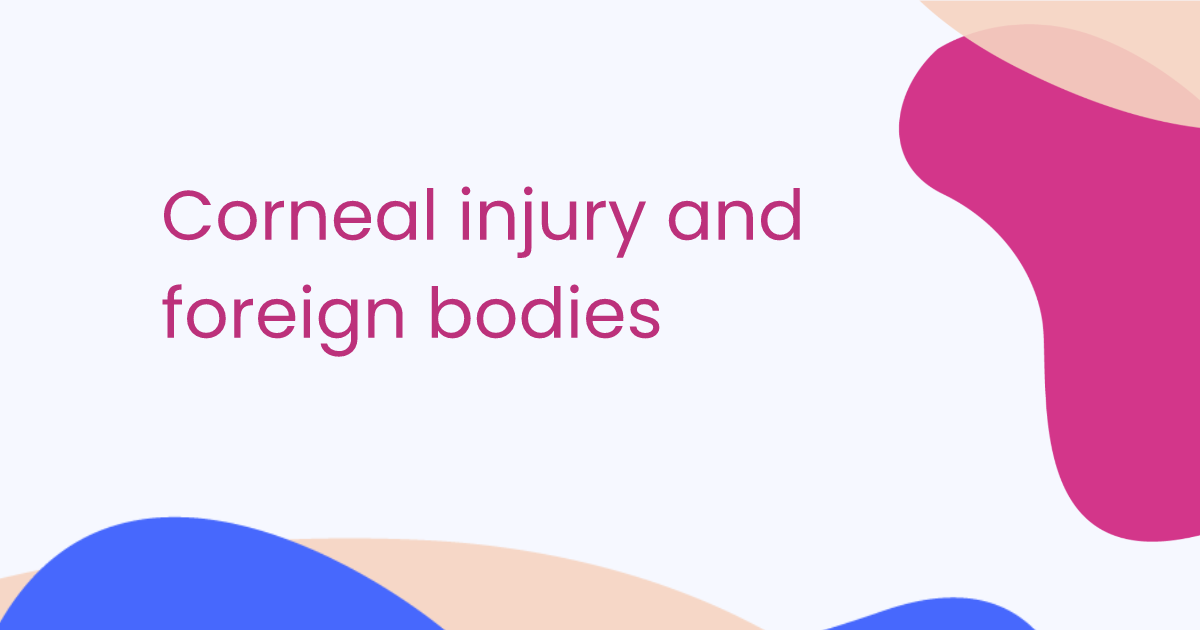Umgang mit Augenverletzungen
Peer reviewed by Dr Hayley Willacy, FRCGP Last updated by St John AmbulanceLast updated 21 Nov 2016
Erfüllt die Anforderungen des Patienten redaktionelle Richtlinien
- HerunterladenHerunterladen
- Teilen Sie
- Sprache
- Diskussion
Diese Seite ist archiviert worden.
Sie wurde in letzter Zeit nicht überarbeitet und ist nicht auf dem neuesten Stand. Externe Links und Verweise funktionieren möglicherweise nicht mehr.
Dieses Merkblatt wurde auf der Grundlage von Erste-Hilfe-Ratschlägen der St. John Ambulance, der landesweit führenden Erste-Hilfe-Organisation, erstellt. Diese Ratschläge sind kein Ersatz für einen Erste-Hilfe-Kurs - finden Sie einen Kurs in Ihrer Nähe.
Eye injuries vary from something very minor, such as getting shampoo in your eye, to something quite serious, such as a cut, which could cause permanent loss of vision.
In diesem Artikel:
Common types of eye injury include:
Foreign objects getting stuck in the eye, like an eyelash or pieces of grit, wood or metal.
Cuts or grazes, from sharp objects like glass or metal.
Severe blows to the eye, from a hard object, like a ball.
Foreign objects like grit, or a loose eyelash, often land on the surface of the eye. Usually you can easily rinse these out but sharp fragments like grit, metal or glass may cut the eye in which case the person should go to hospital.
All eye injuries are potentially serious because they could damage the person's vision. Even grazes to the surface of the eye, called the cornea, can lead to scarring or infection, which could permanently damage someone's vision.
Wann sollte ich mir wegen Augenschmerzen Sorgen machen?
Lesen Sie unten weiter
Worauf ist zu achten?
The five key things to look for are:
Pain in the eye or eyelid.
A visible wound or bloodshot appearance.
Partial or total loss of vision.
Blood or a clear fluid leaking from a wound.
Screwed up eyelids and watering if there's something in there.
If you notice these symptoms then you need to take action to prevent further damage.
Was Sie tun müssen
Tell them not to rub it as this could make it worse.
If you think they might have something in their eye
Ask them to sit down facing a light.
Gently open their eyelids with your thumbs and ask them to look right, left, up and down as you look closely at the eye.
If you can see something in there, wash it out by pouring clean water over the inner corner of the eye.
If this doesn't work or the eye still hurts, send or take them to hospital.
If you think their eye may be bruised or cut
Help them to lie on their back and hold their head to keep it as still as possible.
Tell them to keep both eyes still, as moving their good eye will also move the 'bad' eye, which could make it worse.
Give them a sterile dressing, or a clean non-fluffy pad to hold over their 'bad' eye.
If it will be a while before you can get medical help, then you can hold the pad in place with a bandage.
Now take or send them to hospital.
Hinweis: Diese Hinweise sind kein Ersatz für gründliche Kenntnisse in Erster Hilfe. Die St John Ambulance bietet landesweit Erste-Hilfe-Kurse an.
Adapted from the St John Ambulance leaflet: eye injuries. Copyright for this leaflet is with St John Ambulance.
Patient picks for Eye injuries

Gesundheit der Augen
Netzhautablösung
The retina is a structure at the back of the eye which is essential for sight. When two layers of tissue in the retina become separated, it is known as a retinal tear or detachment. It is a very serious eye condition and can cause severe visual impairment if it is not treated promptly. However, with rapid diagnosis and treatment, which is usually surgery, the outlook (prognosis) may be very good for some types of retinal detachment.
von Dr. Colin Tidy, MRCGP

Gesundheit der Augen
Hornhautverletzungen und Fremdkörper
Minor scratches or abrasions to the cornea are common. They can be extremely sore but usually heal in 24-48 hours. A course of antibiotic eye drops or ointment is commonly prescribed to prevent an eye infection from developing. More serious injuries to the eye may occur from sharp objects and from small flying particles hitting the eye at high speed. Serious injury can also result from chemical burns. Always see a doctor for a proper eye examination if you suspect that your eye has been injured from a small flying particle, or from a chemical.
von Dr. Mary Elisabeth Lowth, FRCGP
Lesen Sie unten weiter
Artikel Geschichte
Die Informationen auf dieser Seite wurden von qualifizierten Klinikern verfasst und von Fachleuten geprüft.
21 Nov 2016 | Latest version
6 Aug 2013 | Originally published
Verfasst von:
St John Ambulance

Fragen, teilen, verbinden.
Stöbern Sie in Diskussionen, stellen Sie Fragen, und tauschen Sie Erfahrungen zu Hunderten von Gesundheitsthemen aus.

Fühlen Sie sich unwohl?
Beurteilen Sie Ihre Symptome online und kostenlos
Sign up to the Patient newsletter
Your weekly dose of clear, trustworthy health advice - written to help you feel informed, confident and in control.
By subscribing you accept our Privacy Policy. You can unsubscribe at any time. We never sell your data.